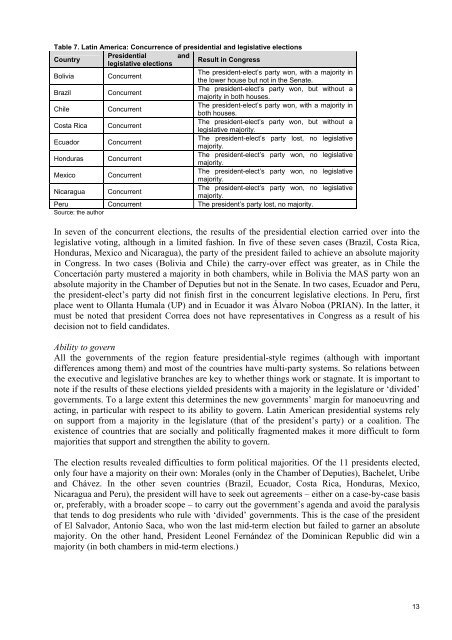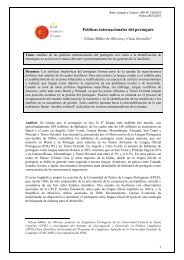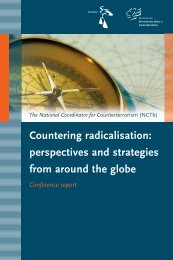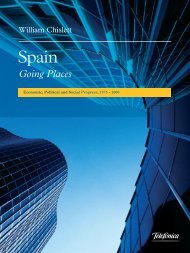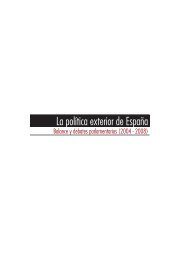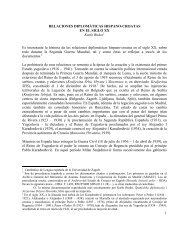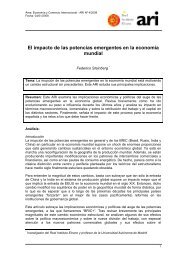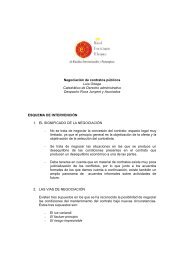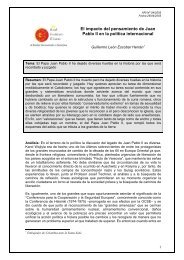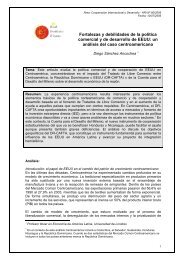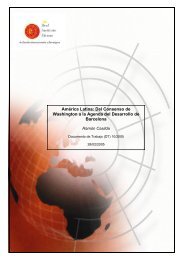Download PDF - Real Instituto Elcano
Download PDF - Real Instituto Elcano
Download PDF - Real Instituto Elcano
- No tags were found...
Create successful ePaper yourself
Turn your PDF publications into a flip-book with our unique Google optimized e-Paper software.
Table 7. Latin America: Concurrence of presidential and legislative electionsCountryPresidential andlegislative electionsResult in CongressBolivia ConcurrentThe president-elect’s party won, with a majority inthe lower house but not in the Senate.BrazilConcurrentThe president-elect’s party won, but without amajority in both houses.ChileConcurrentThe president-elect’s party won, with a majority inboth houses.Costa Rica ConcurrentThe president-elect’s party won, but without alegislative majority.Ecuador ConcurrentThe president-elect’s party lost, no legislativemajority.Honduras ConcurrentThe president-elect’s party won, no legislativemajority.Mexico ConcurrentThe president-elect’s party won, no legislativemajority.Nicaragua ConcurrentThe president-elect’s party won, no legislativemajority.Peru Concurrent The president’s party lost, no majority.Source: the authorIn seven of the concurrent elections, the results of the presidential election carried over into thelegislative voting, although in a limited fashion. In five of these seven cases (Brazil, Costa Rica,Honduras, Mexico and Nicaragua), the party of the president failed to achieve an absolute majorityin Congress. In two cases (Bolivia and Chile) the carry-over effect was greater, as in Chile theConcertación party mustered a majority in both chambers, while in Bolivia the MAS party won anabsolute majority in the Chamber of Deputies but not in the Senate. In two cases, Ecuador and Peru,the president-elect’s party did not finish first in the concurrent legislative elections. In Peru, firstplace went to Ollanta Humala (UP) and in Ecuador it was Álvaro Noboa (PRIAN). In the latter, itmust be noted that president Correa does not have representatives in Congress as a result of hisdecision not to field candidates.Ability to governAll the governments of the region feature presidential-style regimes (although with importantdifferences among them) and most of the countries have multi-party systems. So relations betweenthe executive and legislative branches are key to whether things work or stagnate. It is important tonote if the results of these elections yielded presidents with a majority in the legislature or ‘divided’governments. To a large extent this determines the new governments’ margin for manoeuvring andacting, in particular with respect to its ability to govern. Latin American presidential systems relyon support from a majority in the legislature (that of the president’s party) or a coalition. Theexistence of countries that are socially and politically fragmented makes it more difficult to formmajorities that support and strengthen the ability to govern.The election results revealed difficulties to form political majorities. Of the 11 presidents elected,only four have a majority on their own: Morales (only in the Chamber of Deputies), Bachelet, Uribeand Chávez. In the other seven countries (Brazil, Ecuador, Costa Rica, Honduras, Mexico,Nicaragua and Peru), the president will have to seek out agreements – either on a case-by-case basisor, preferably, with a broader scope – to carry out the government’s agenda and avoid the paralysisthat tends to dog presidents who rule with ‘divided’ governments. This is the case of the presidentof El Salvador, Antonio Saca, who won the last mid-term election but failed to garner an absolutemajority. On the other hand, President Leonel Fernández of the Dominican Republic did win amajority (in both chambers in mid-term elections.)13


